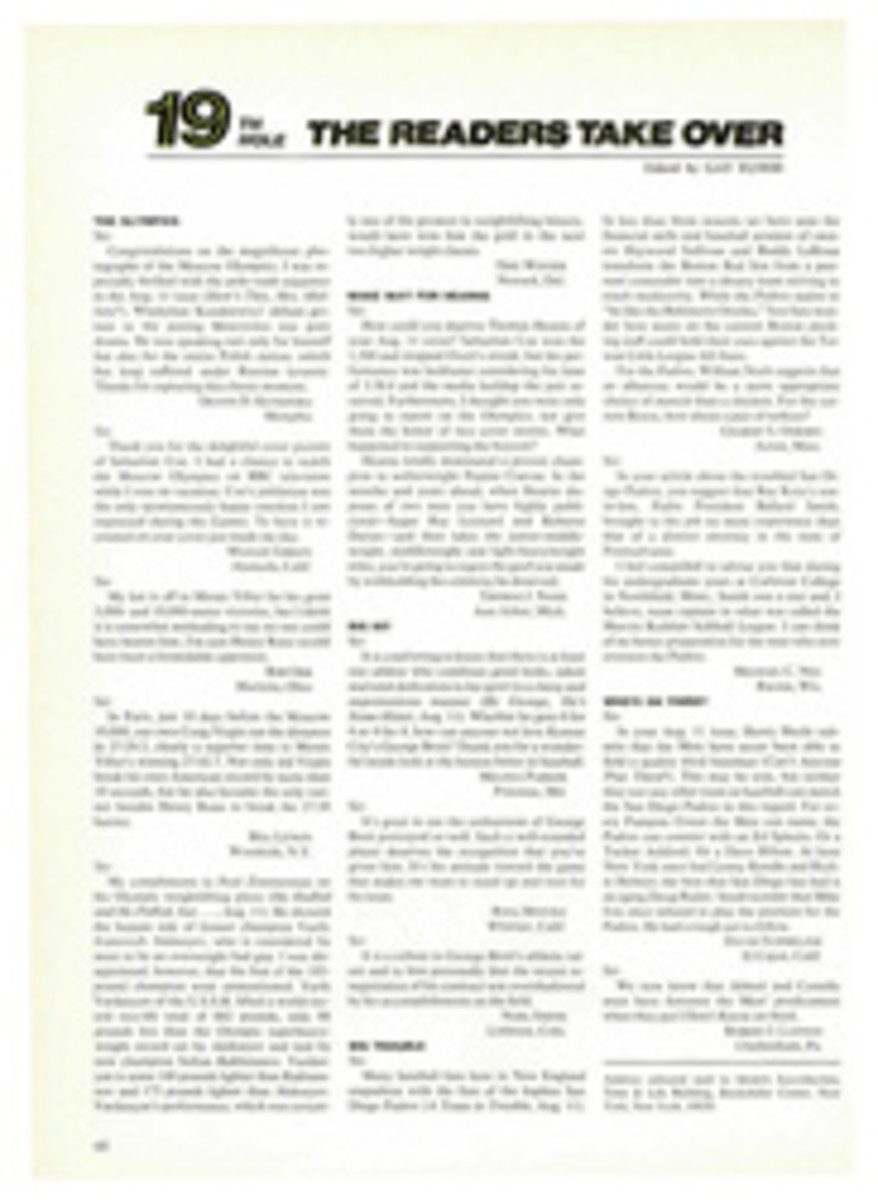
STUDEBAKER LOVERS RALLY ROUND A MASSIVE SHOW-AND-TELL CONVENTION
A few miles south of Gettysburg, Pa., near the town's National Military Park, there stands the remains of an awful example of Tourist Trap Tacky architecture. It had been a shopping mall-amusement park combo built to a vaguely international motif, with plywood and cement pyramids, Dutch-style windmills, medieval battlements and worse. Fortunately, it proved to be as unsuccessful as it was unattractive, and is now empty. Its optimistically large parking lot, however, is still usable, and on one sweltering weekend last month it served—fittingly, considering the defunct background—as a rendezvous point for some 2,500 people drawn by their common admiration for Studebaker automotive products.
Most of those present were attending the 16th International Meet of the Studebaker Drivers Club, Inc., which, with more than 9,000 members, claims to be the world's biggest appreciation society for any marque. The club members brought with them, to be displayed and judged on the parking lot, some 700 Studebaker cars and trucks, and this probably constituted the largest and shiniest such collection to be seen since 1963, when the Studebaker Corporation halted auto production at its main factory in South Bend, Ind. The members spent three days milling about among the elderly vehicles, swapping parts and talking about what a loss to society it is that this beautiful and efficient automobile is no longer manufactured. Many reasons were offered for the demise, but the consensus was that the engineering and styling of the Studebaker had been too far ahead of their time to suit the taste of most Americans.
In this connection the name of Sherwood Egbert was reverently invoked as often as that of Robert E. Lee might be at a gathering of the Children of the Confederacy. Egbert was president of Studebaker from 1961 to 1963 and fought valiantly, according to the SDCers, to keep the car in production. SDCers feel that Egbert could have saved the Studebaker if a serious illness had not obliged him to resign.
The SDC meet was not only an unusual display of machines but also an excellent demonstration of how the competitive collecting urge can be organized into a powerful, sometimes obsessive, recreational interest. Standing beside a Bermuda-blue 1937 Dictator, so highly glossed that the reflection from its body burned the eyeballs, Frank Mitchell, a mechanical engineer from Carlisle, Ontario, talked about his car. He said that five years ago he bought the Dictator for $2,700 and since then had spent 1,500 hours bringing it to its present gleaming state. "I wanted to work on an older auto," he said, "but I wasn't all that taken with the other mass-produced marques. I did considerable research and concluded, as everybody else here has, that the Studebaker was an exceptionally fine car, worthy of being preserved."
Mitchell, like many of the other exhibitors, drove his ancient beauty to the convention—in his case, 400 miles. One of the brags of the SDCers is that some 50,000 Studebakers are still used for daily transportation. "Outsiders are amazed at how easy it is to get parts," says Max Corkins Jr., the SDC national president, who owns 43 Studebaker cars and trucks. "We do a lot of swapping and there are more do-it-yourselfers in the SDC than in most of the other major auto clubs. We keep in touch. If I'm traveling and break down, there are few places in the country where it will take me longer than 48 hours to get any part I need." There are parts exchanges between club members, and two South Bend, Ind. firms (Newman & Altman Inc., and Avanti Parts Corp.) sell both old and newly manufactured Studebaker parts. The Avanti Motor Corporation also builds new Avantis, the popular sporty Studebaker introduced in 1962. The firm turns out 200 a year.
Two of the oldest representatives of the marque, a pair of electric cars, circa 1907 and 1911, didn't arrive at Gettysburg under their own power. This was understandable because of their fragility—the bodies are wooden and the fenders leather—and because the 48-volt batteries give them a cruising range of barely 50 miles. However, they were trucked to the meet in a 1964 Transtar Studebaker diesel which, like the electrics, is owned by Carroll Studebaker, an electrical contractor and supplier in Dayton, Ohio. Despite his ancestry (none of the family was directly associated with the auto works after 1933) Studebaker didn't become a collector until recently. "I was too busy and couldn't afford this sort of thing," he says, "but then I found these electrics, one in Massachusetts and the other in Kansas. I've been hooked ever since, not just because of the family association but because they're such interesting pieces of machinery. Another thing is that coming to these meets is a good ego booster. They treat me like God because of the name."
Carroll Studebaker says that because of their sentimental value his two electric cars are priceless. The market value of such models is subjective, depending on both how badly the owner wants to sell and how badly the buyer wants to purchase one. Among SDCers, however, there is the notion that the cars could bring about $50,000 each. Another Studebaker of interest at the meet was a great ornate touring car, originally built in 1931 for the governor of Pennsylvania, Gifford Pinchot. The car was used in the governor's inauguration parade and its present owner says he has refused $100,000 for it.
Because they were unique in their classes, the electric cars owned by Carroll Studebaker and the former Pinchot vehicle won uncontested awards at the Gettysburg meet. However, among the more common models, competition for trophies was stiff. All the cars had to be operative enough to be driven into the judging lot. Once there, they were scrutinized meticulously to determine how authentically and artistically they had been preserved or restored.
So high were the standards that no car was judged to be in perfect condition. Frank Mitchell, with his blue 1937 Dictator, came close and won the best-in-show award for six-cylinder cars dating from 1934 to 1946. Out of a possible 200 quality points Mitchell received 199. The single point was deducted because of a pinhead-sized corrosion hole on an inside doorplate.
"It isn't just nit-picking," said Harry Crosson, the meet's publicity director. "You need standards if you're going to build up and maintain the reputation of the marque, and that basically is the common interest we all share. We want the name Studebaker to be remembered forever, or for at least as long as any car is remembered."

